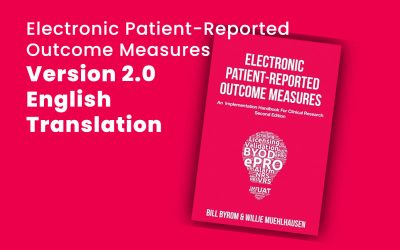The Electronic Clinical Outcome Assessment (eCOA) Consortium, under the umbrella of the Critical Path Institute, has released a condensed version of the best practices for the electronic implementation and migration of Patient-Reported Outcome (PRO) measures. This version, formally unveiled at the UK PROMS Conference on June 19, is based on the full publication by Mowlem et al. (2024) in Value in Health and is now available to the clinical research community in a more accessible and actionable format.
Why This Matters
Electronic PRO (ePRO) systems are critical to modern clinical research. Yet, successful implementation depends on more than just digitizing a form. Proper ePRO deployment requires attention to usability, compliance, and data integrity—especially when migrating validated instruments from paper to digital environments.
The condensed guide helps trial sponsors, CROs, vendors, and regulators quickly verify that key implementation standards are met without needing to parse through the full academic paper.
What’s Inside the Condensed Guide?
The guide organizes best practices into three main categories:
1. System Functionality Best Practices
- Provide clear on-device training.
- Avoid pre-filled answers and auto-advancement.
- Allow backward navigation and final review before submission.
- Ensure consistency in navigation and device orientation.
- Include progress indicators to reduce survey fatigue.
2. Migration Best Practices
- Comply with licensing and copyright from the measure owner.
- Retain original content, formatting, and response orders.
- Use single-item screens and self-contained items for clarity.
- Ensure equal hit spots and font consistency across devices.
- Avoid free-text input when possible to minimize variance.
3. Response Scale Implementation
Tailored approaches are recommended for common scales:
- Verbal Rating Scales (VRS)
- Numeric Rating Scales (NRS)
- Visual Analog Scales (VAS)
Each requires specific formatting considerations to ensure usability and comparability across screen-based devices.
Built for Real-World Use
What makes this condensed version particularly valuable is its usability. It distills the critical insights from 15+ pages of academic discussion into a working reference that teams can apply during planning, development, and validation stages. It even references helpful flowcharts and examples in the original 2024 publication for deeper guidance.
Final Thoughts
This release marks another step forward in advancing patient-centered, digital-ready research practices. As ePRO continues to grow in adoption, tools like this ensure that patient voice remains both measurable and meaningful—without compromising data quality or compliance.
📘 Download the condensed best practices now to align your ePRO efforts with the gold standard in implementation and migration.
Curious about ePRO implementation? We literally wrote the book! Click the image below to get the book now. All proceeds from the sale of Electronic Patient-Reported Outcome Measures go to charity. So, why not buy two?





